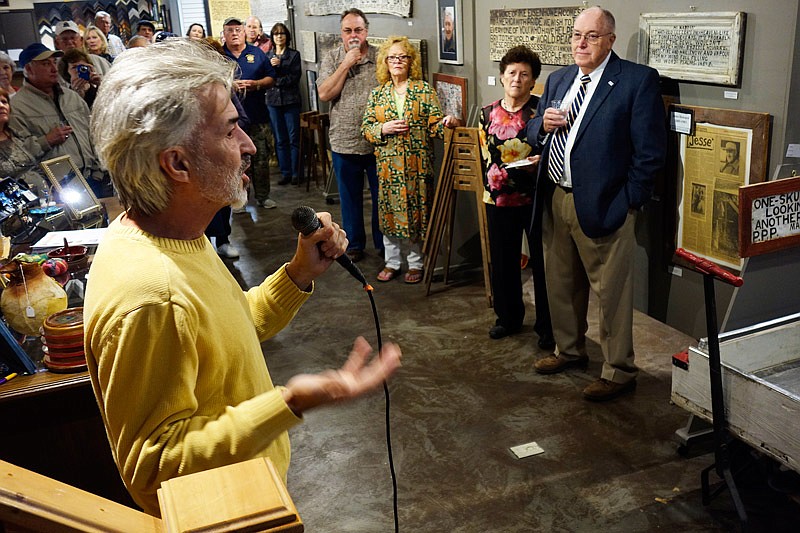For Kansas City-based singer/songwriter Mark Stevenson, there was just something about Fulton folk artist Jesse Howard (1885-1983).
"I grew up on a farm in Indiana," Stevenson said. "I know what it's like to be a small-town eccentric."
Stevenson, an art conservator by trade, performed Friday night at Autumn on the Bricks. He spoke about Howard and their post-mortem connection.
"In 2000, I walked into a dual exhibition (that he was part of)," Stevenson said. "I thought Jesse kicked backside. I look at his work and thought, 'There's a song in every sign.'"
Howard's work may not be accepted as art by some, but it is by members of the Kansas City Art Institute, who have collected as much of his work as possible. Howard lived near Fulton until his death, and he turned his 20-acre property into an attraction with hundreds of his hand-lettered signs - on barn wood, on the sides of farm implements or scraps of metal. Whatever the material, it was first whitewashed and then carefully hand-lettered in an all-caps font of Howard's own creation.
Topics ranged from the Biblical to the political to the hard-to-discern. In 1952, his neighbors applied to have Howard committed to an asylum, which he avoided.
Howard's passion immediately resonated with Stevenson, he said. He began taking Howard-isms and turning them into songs, a project that ended in an album.
"In 2005, the day the CD was done, it already had a release date," Stevenson said.
He named the collection of songs, "Because Iniquity Shall Abound."
"Writing happens at the interface between the conscious and subconscious," he said. "A few songs came like bolts of lightning."
He mentioned he shared the copyright of his songs with Jesse Howard because it was the right thing to do.
"I didn't write another song for five years after that," he said of the emotionally draining experience.
Fulton Mayor LeRoy Benton read a proclamation dedicated to Howard at the Art House gallery reception. He said Howard blended cultural references to religion, politics and the business of local leaders, and "sentiments not echoed by his neighbors."
"What a great guy Jesse was," he said of Howard, calling him a pioneer of self-expression. "What fun it would have been to talk to him."
Stevenson said Howard saw life in black and white terms.
"He saw right and wrong and very little space in between," he said. "He saw things in explicit terms. He kind of scared people."
Stevenson added his grandfather also was creative - a lifestyle for which people of that long-ago era had little appetite.
"There was no path to being an artist. You had to knuckle down, marry a good woman and pay your taxes," he said. "But (Howard) couldn't stop. He could not - not do this, and his family paid the price. To be his child, to be the child of the local eccentric, could not have been easy. But (Howard) knew the power of language."

